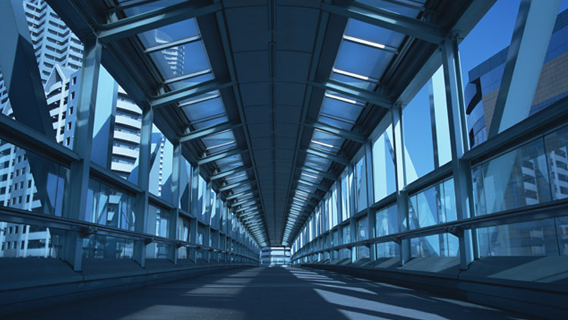November 18, it’s a day to finally start the first squeeze for new sake today. We hang a big cedar ball under the eaves to announce new sake is ready in Matsumoto Sake Brewing. We select young leaves of cedars that have grown in summer through autumn on the site of the brewery and make this cedar ball from them. The origin of a cedar ball is associated with “Oomiwa shrine” in Sakurai city, Nara prefecture. The name of the shrine had relation with the writing and reading of Chinese character, that is “神” as “Miwa”, “神酒” as “Miwa”, in the ancient chronicles of Japan called “Nihonshoki”. It was said that sake was for God, and God was Miwa. The shrine has been conveying the oldest worship tradition, that is for Omononushi-no-kami to be enshrined and stay at the Mount Miwa, the shrine named the mountain as the object of worship and built three shrine gates without building main shrine hall.
Takahashi-Ikuhino-mikoto was appointed as “Sakehito” who manages making sake to devote to God. He was the first master brewer as “Sakehito” for Omononushi-no-kami. And it has been said that he brewed the excellent sake overnight. Then the shrine became worshiped from around the nation as the shrine to make sake. A God was believed to live in the cedars that grow wild in the Mount Miwa. Hanging a cedar ball made from the branches of the cedars has been practiced as the Shinto ritual to thank God for new sake brewed by newly harvested rice in autumn. Nowadays, a cedar ball is hung as a sign of “New sake is ready. We thank God Oomiwa” in time with squeezing new sake at sake breweries all over Japan.
Furthermore, stretching our wing of dream to ancient time, the strikingly similar names of place and layout as those in Nara Basin, like Mt. Mikasa, Mt. Kasagi, Mt. Amanokagu, Sumiyoshi shrine, which are centering around Mount Miwa, remain in Asakura, Kitakyusyu.
There is a study that says this is the traces that “Yamatai Kingdom”, described in the ancient history book in China “Gishiwajinden (End of 3rd century)”, moved its capital city to Kitakyushu. Even now, we can see the cases in the world that people named the new land as the same one in home country. Such as people who are not originally from the UK call UK as a mother country with familiarity.
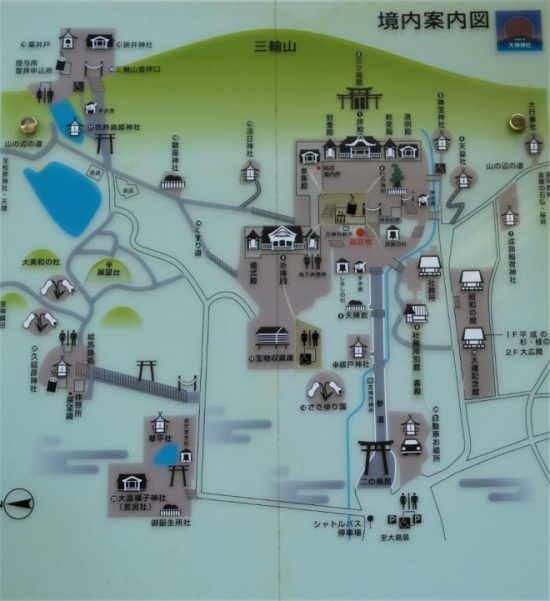
Oomiwa shirine Miwa Sakurai, Nara
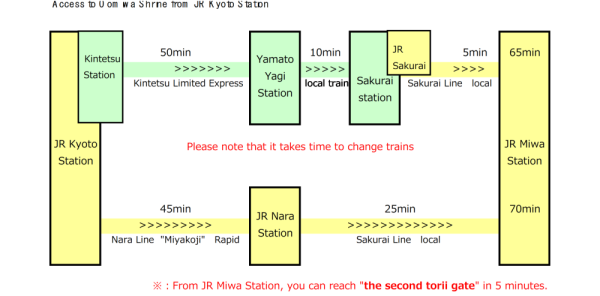
Access to Omiwa shrine from JR Kyoto station
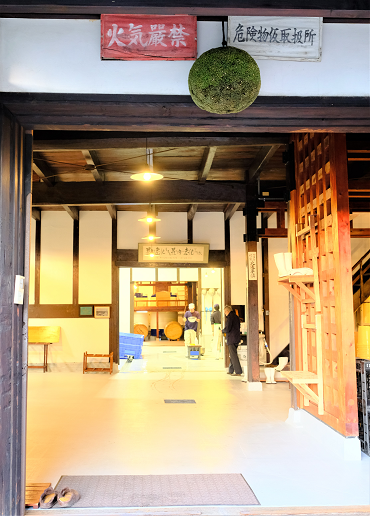
”Big cedar ball” 2020 November 19, Daikoku kura
A cedar ball shows lush green in the season of new sake, then turns its color to dried-up and undertone brown along with the passing of time of new year, spring equinox, summer, and autumn again. Sake squeezed between the beginning of autumn and beginning of spring matures in the same way as a cedar ball and produces peaceful taste and flavor. It is called “Akiagari” and we have the fabulous time for drinking.
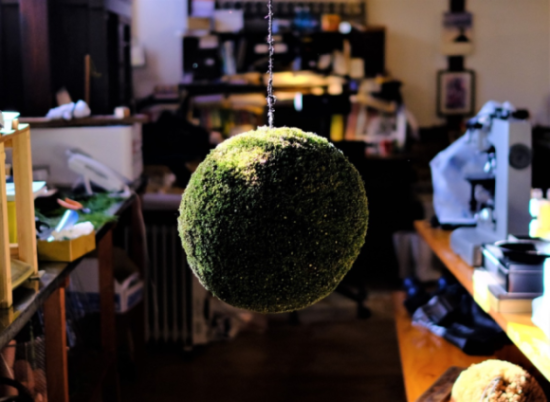
Matsumoto Sake Brewing: Making a cedar ball in the laboratory
We, Matsumoto Sake Brewing, make a cedar ball from the branches of cedars that have grown on the site of our brewery by the following procedure.
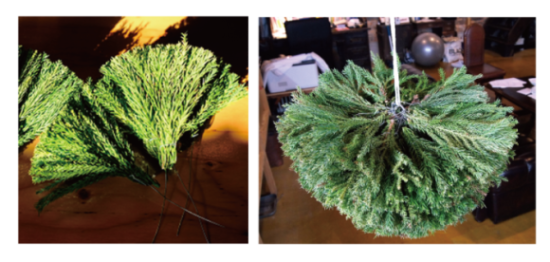
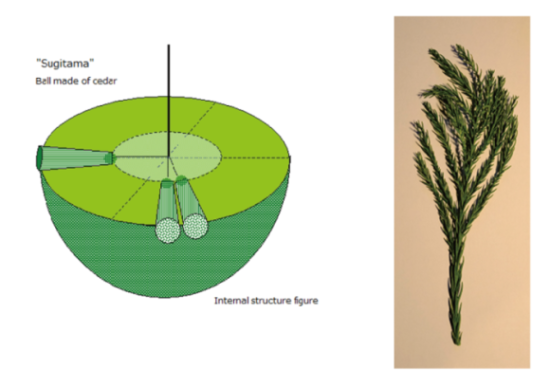
We bind the bundled end of cedar branches with wire, fasten them to the center core ring one after another, and finally cut them shaped like a sphere.
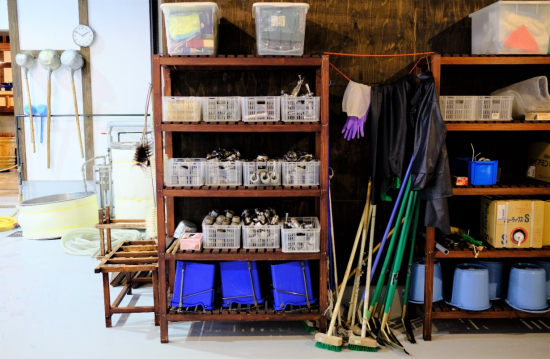
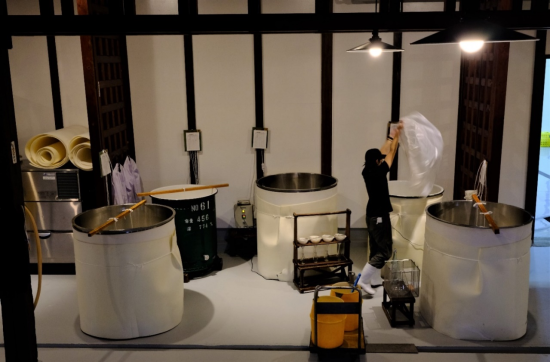
Matsumoto Sake Brewing: Tools on the shelf and production of yeast mash
The basic way of modern sake brewing is called “Kandukuri”. The method was completed by brewing Nadashu mainly in the region called Nadahongou (present-day Kobe, Hyogo) in Edo era and stabilizing the quality to be transported to Edo, huge consumer region, by sea. “Kandukuri” means the way to brew sake in the cold wintertime from the new rice harvested in autumn of that year.
We can find the rational reason to accomplish Nadashu. It is said, to make things work out, the three factors, “time in heaven”, “the advantage of the earth”, “the harmony of people”, should be needed together.
1. The sake became in demand as the daily pleasure after the long war-torn “Warring States” ended, “Tokugawa government” was established, people felt mentally peace and were afforded to enjoy a family or friends’ get-together with the joys of labor.
2.There are many steep stream rivers in Nada that are swollen with a volume of water because of Rokko Mountains in the backland and run into Kobe bay. The region was blessed with the environment that people were able to install the water wheel-driven rice mill machine different from what it is now and close to the port for shipping to Edo. Thanks to such advantages that are progressively developed. Furthermore, the water flow underground and “Miyamizu”, which was rich in mineral and suitable for fermentation, welled up and used effectively for the sake breweries standing side by side along the coastline.
3. That region seeing Rokko Mountains in the backland was paddy field area stretching east to west and had the advantages of sunshine, water supply and path of the wind. The farmers grow large grain rice suitable for sake brewing and harvest plentiful crops by the paddy agriculture. The whole family of them are basically busy for the period of plowing up in spring to harvesting in autumn.
In agricultural off-season that is from getting cold season around the beginning of autumn to the next rice-planting season passing the winter, man’s farmers are relatively free. The sake breweries in Nadagogou provided the best suited workplace, which was close to them, pleasant working environment, and good-paying job in wintertime. They could acquire the financial comfort there by their own experiences and abilities through line of sake brewing experience that begins from Tsukaibashiri (Inexperienced apprentice youngster), Sendou (Responsible for squeezing mash), Daishi (Responsible for rice malt) and finally to Morishi (General manager in sake brewery). Modern sake brewing blossomed in Nada where these three conditions met together.
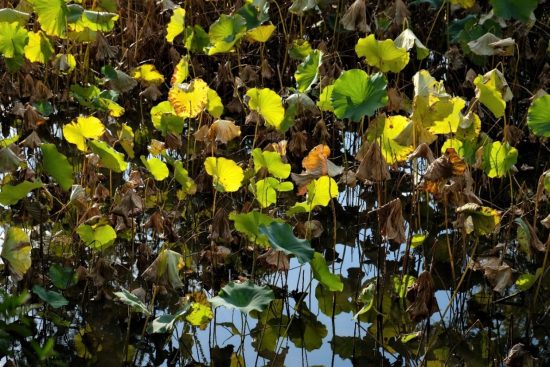
“Manpuku-ji Temple” Head temple of Obaku sect, Twilight of lotus pond
I would really like you to visit the peaceful, artistic, and original Buddha temple away from noisy tourists’ atmosphere in Kyoto.
Access: From Fushimi Sta. of Keihan Electric Railway, 10-minute ride by Uji line, get off at Obaku Sta., and 5-minute walk. Easy access.
Obaku-san Manpuku-ji Temple was built by Chinese Buddhist monk “Ingen Ryuki zen master” in 1661. The Chinese-style feature remains strong and you see fewer people there, that is different from the atmosphere of other temples in town of Kyoto, and the air is clean.
COLUMNEssay
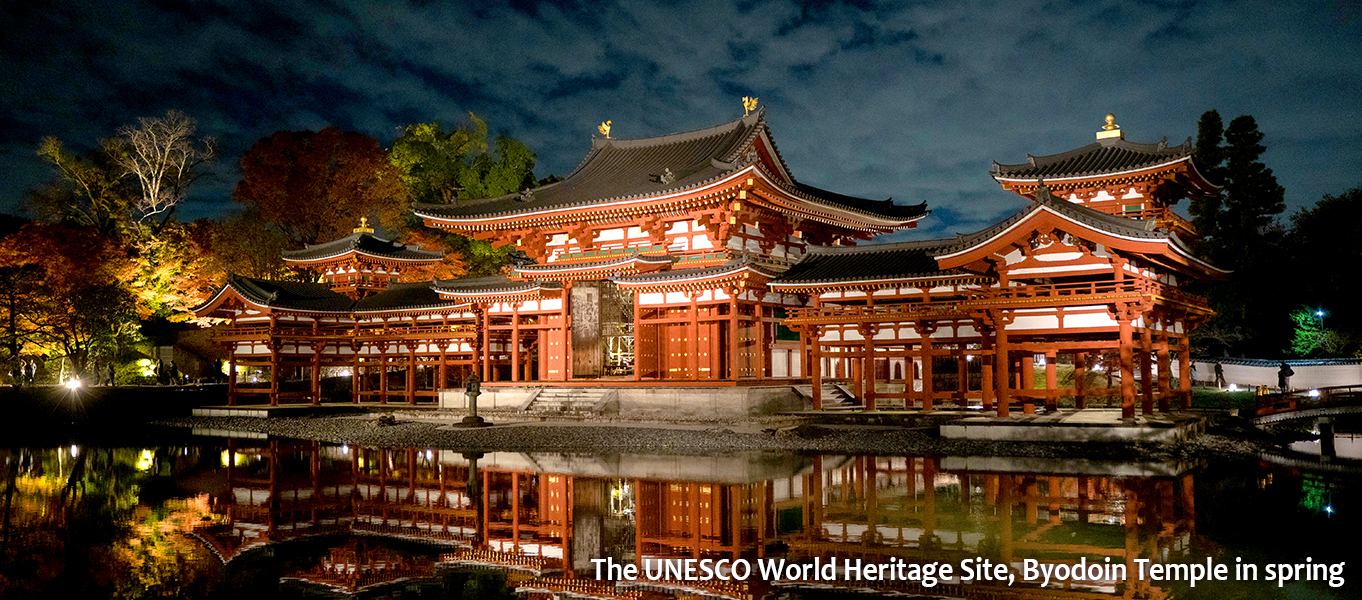
Essay
Scenery from the sake brewery - 005 A big cedar ball
Monthly photo essay on Japanese sake brewing by Mr. Keiichiro Katsuki, a Japanese sake brewing expert.
Please refer to episode 001 for more information on the author.


